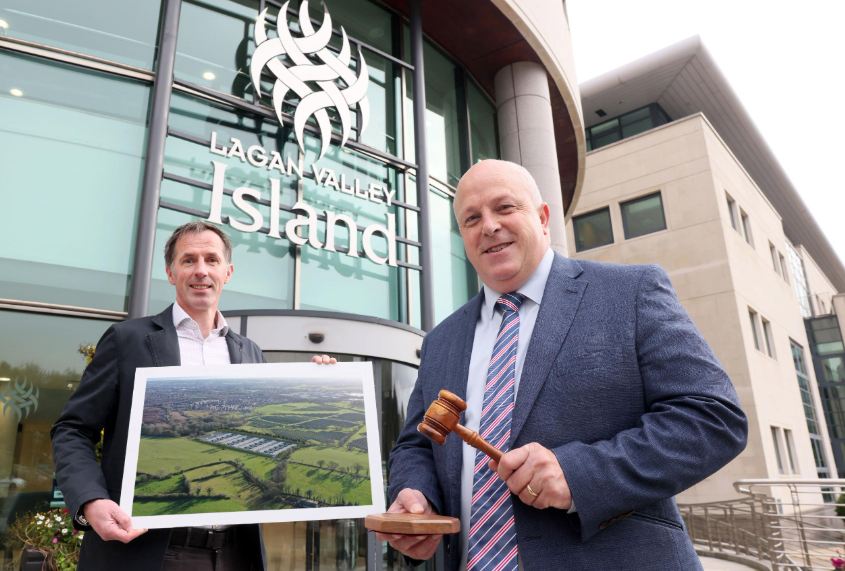Lisburn & Castlereagh City Council has approved planning for a £75 million long-duration battery energy storage facility at Moneybroom Road, Lisburn — a project positioned to play a pivotal role in Northern Ireland’s transition to a low-carbon, resilient electricity grid.
The development underscores how local authorities are beginning to operationalize decarbonization goals through infrastructure that enables renewable energy integration and system flexibility.
The facility, classified as critical grid infrastructure, will store surplus renewable electricity—mainly from wind and solar—during periods of low demand and release it when generation dips. This capability is central to mitigating intermittency, one of the most pressing technical constraints facing renewable-heavy power systems. Northern Ireland, where wind already supplies nearly 45% of total electricity consumption, is now turning to large-scale battery assets to stabilize frequency, defer grid reinforcements, and reduce curtailment losses.
Council officials emphasized that the decision aligns with regional planning policy designed to attract sustainable private investment and strengthen energy security. Alderman James Tinsley, Chairman of the Planning Committee, described the approval as consistent with the council’s strategic vision.
Beyond grid stability, the economic dimension of the project is substantial. The £75 million investment is expected to create construction-phase employment and contracting opportunities across the local supply chain, strengthening Lisburn’s credentials as a site for low-carbon industrial activity. For investors, the council’s decision signals a pragmatic, open-for-business approach to energy infrastructure projects that combine environmental and economic value creation.
Les Ross, lead consultant from Les Ross Planning, which managed the application, highlighted the collaborative nature of the process. “Securing planning permission for this major energy storage facility reflects the strength of the proposal and the constructive engagement with the council’s Planning Service,” he said.
When completed, the Moneybroom Road battery storage facility will provide a balancing function for the grid, allowing the system operator to manage fluctuations between supply and demand in real time. Long-duration batteries—typically those with discharge capabilities exceeding four hours—represent a technological step beyond short-duration lithium-ion systems that currently dominate the market. They enable sustained energy release during extended periods of low wind generation, providing a more robust safeguard against blackouts and price volatility.
Northern Ireland’s integration of storage infrastructure is occurring alongside wider reforms under its Energy Strategy for 2050, which targets net-zero carbon emissions and at least 80% renewable electricity by 2030. Achieving that target will require flexible assets capable of smoothing daily and seasonal variability, and the Lisburn project contributes directly to that objective.
The project also fits into a broader pattern of regional authorities facilitating energy transition investments through streamlined permitting and clear planning frameworks. In this case, Lisburn & Castlereagh’s planning service demonstrated that proactive, transparent decision-making can accelerate private sector participation in complex, capital-intensive developments.
Stay updated on the latest in energy! Follow us on LinkedIn, Facebook, and X for real-time news and insights. Don’t miss out on exclusive interviews and webinars—subscribe to our YouTube channel today! Join our community and be part of the conversation shaping the future of energy.
